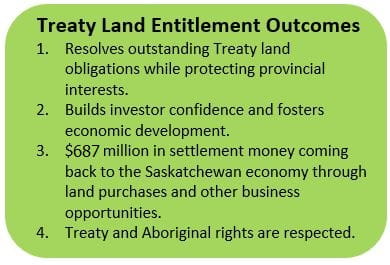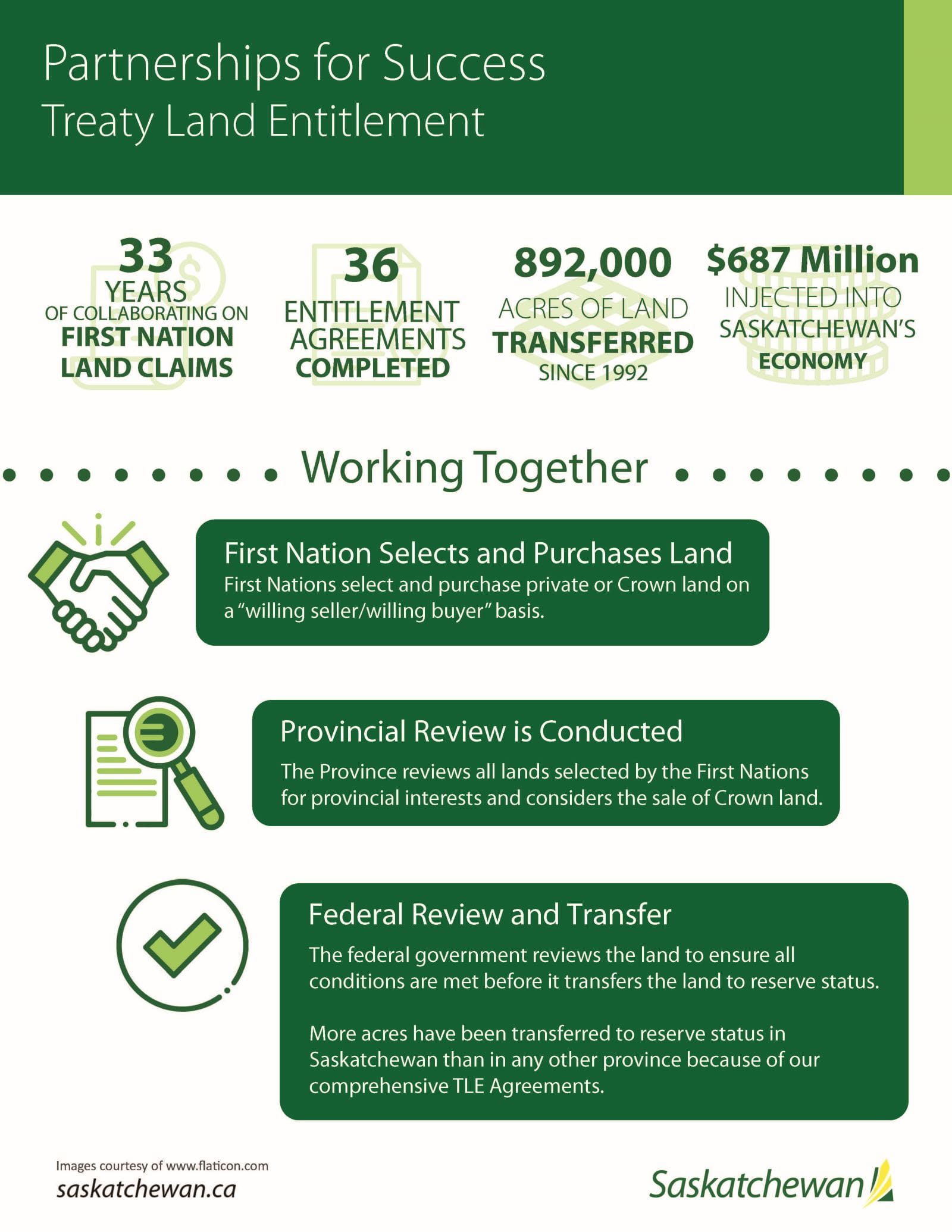Since 1992, the governments of Canada, Saskatchewan and 36 First Nations have signed settlements modelled on the Saskatchewan Treaty Land Entitlement Framework Agreement. This agreement established a method of resolving outstanding Treaty land obligations to First Nations. It provides each First Nation with money to purchase Crown or privately owned land on a "willing seller/willing buyer" basis, and provides a process to transfer that land to reserve status. To date, almost 892,000 acres of land has transferred to reserve under TLE agreements. More acres have been transferred to reserve status in Saskatchewan than in any other province because of our comprehensive TLE Agreements.

Through the TLE process, Saskatchewan is working with Canada to fulfil past promises to First Nations and create a better future. Between 1871 and 1906, the federal Crown and First Nations signed numbered Treaties (2, 4, 5, 6, 8 and 10) in the region that is now Saskatchewan. A key aspect of these Treaties was the allocation of reserve land. Canada agreed to establish reserves based on the First Nation's population at the time of original survey, but this did not happen in all cases, which left the federal government with outstanding obligations.
Saskatchewan is legally obligated to help Canada fulfil TLE. However, the amount and location of available unoccupied provincial Crown land is not sufficient to settle the outstanding TLE claims. Therefore, Canada, Saskatchewan and First Nations negotiated an alternative way to address these constitutional obligations.
Each party in the TLE process has its own unique set of responsibilities including:
- The TLE First Nation selects and purchases land, and is responsible for addressing third-party interests;
- Saskatchewan reviews land selected by a First Nation for provincial interests and considers the sale of Crown land; and
- Canada reviews the land to ensure all conditions are met before it transfers the land to reserve status.
Canada has determined that eight additional First Nations have valid TLE claims. The TLE process is a testament to cooperation between federal, provincial and First Nation governments. For more information, visit the Treaty Land and Entitlements webpage.
Produced by: Ministry of Government Relations
Source: Ministry of Government Relations



